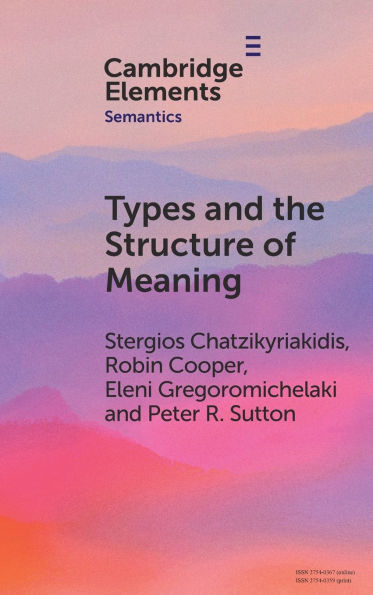Types and the Structure of Meaning: Issues in Compositional and Lexical Semantics
Addresses the role of structure in semantic analysis from the perspective of theories of meaning using rich theories of types. Also relates the theory of frames to these type theories as introducing, to some extent, similar structure into semantic analysis. The authors show how a structured approach is necessary to appropriately analyse phenomena in areas as diverse as lexical semantics and the semantics of attitudinal constructions referring to psychological states. In particular, these are: polysemy taken together with copredication, and attitudes such as belief and knowledge. The authors argue that the very same structure required to define a rich system of types enables them to adequately analyse both of these phenomena, thus revealing similarities in two otherwise apparently unrelated topics in semantics. They also argue that such theories facilitate a semantic theory oriented towards a psychological and contextually situated view of meaning. This title is also available as open access on Cambridge Core.
1147116629
Types and the Structure of Meaning: Issues in Compositional and Lexical Semantics
Addresses the role of structure in semantic analysis from the perspective of theories of meaning using rich theories of types. Also relates the theory of frames to these type theories as introducing, to some extent, similar structure into semantic analysis. The authors show how a structured approach is necessary to appropriately analyse phenomena in areas as diverse as lexical semantics and the semantics of attitudinal constructions referring to psychological states. In particular, these are: polysemy taken together with copredication, and attitudes such as belief and knowledge. The authors argue that the very same structure required to define a rich system of types enables them to adequately analyse both of these phenomena, thus revealing similarities in two otherwise apparently unrelated topics in semantics. They also argue that such theories facilitate a semantic theory oriented towards a psychological and contextually situated view of meaning. This title is also available as open access on Cambridge Core.
64.99
Out Of Stock
5
1

Types and the Structure of Meaning: Issues in Compositional and Lexical Semantics
78
Types and the Structure of Meaning: Issues in Compositional and Lexical Semantics
78Related collections and offers
64.99
Out Of Stock

Product Details
| ISBN-13: | 9781009619356 |
|---|---|
| Publisher: | Cambridge University Press |
| Publication date: | 06/05/2025 |
| Series: | Elements in Semantics |
| Pages: | 78 |
| Product dimensions: | 6.50(w) x 1.50(h) x 9.50(d) |
From the B&N Reads Blog
